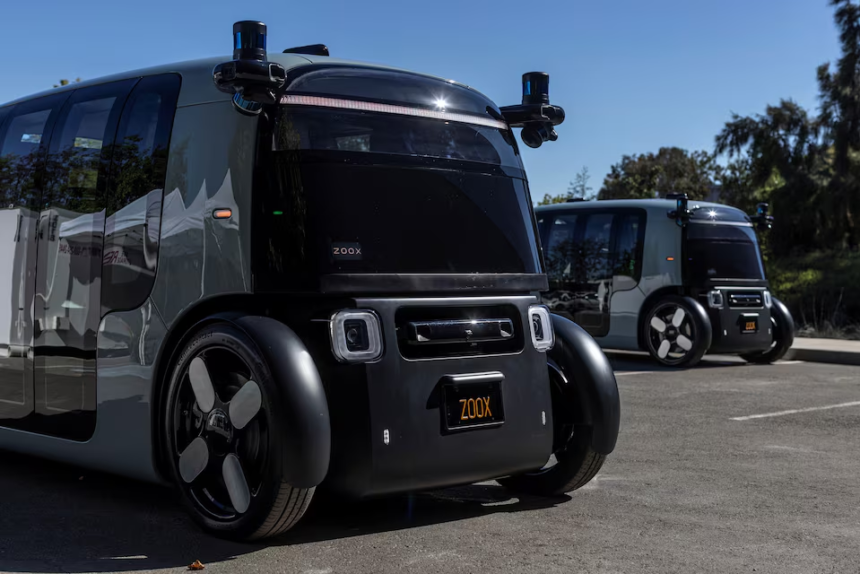Amazon's Zoox robotaxis to drive faster, farther, at night in Las Vegas

15.03.2024
Amazon.com’s self-driving car subsidiary, Zoox, is endeavoring to keep pace with its competitor Waymo by expanding the scope of its vehicle testing in California and Nevada. This expansion includes broader geographical coverage, higher operating speeds, and the inclusion of nighttime driving.
The recent adjustments, unveiled on Thursday, primarily affect Zoox’s fleet of proprietary vehicles, which are characterized by their distinctive design resembling “toaster ovens on wheels” and their absence of manual controls such as steering wheels, pedals, and gear shifters. Additionally, Zoox operates retrofitted self-driving Toyota Highlanders in several cities including Seattle, Las Vegas, San Francisco, and Foster City, California.
While Zoox’s initiatives represent a notable step forward, they pale in comparison to the ambitious plans announced by Alphabet’s Waymo earlier this week. Waymo revealed intentions to launch a taxi service in Los Angeles, supplementing its existing operations in San Francisco and Phoenix, where it currently transports passengers in retrofitted autonomous Jaguars.
Zoox has disclosed that it will permit its custom-designed vehicles to operate at speeds of up to 45 miles per hour (72 kph), up from the previous limit of 35 mph. Furthermore, the company has expanded the permissible travel area in Las Vegas from one mile to five miles, aiming to subject its autonomous vehicles to more challenging urban environments. The company emphasized the importance of driving in larger areas to expose its robotaxis to the most bustling conditions they have ever encountered.
In addition to increasing operational parameters, Zoox has announced that its vehicles will now be capable of driving in light rain and during nighttime hours, a crucial step for gathering comprehensive data.
Similar to its competitors, Zoox aspires to ultimately replace human drivers with fully autonomous vehicles, which are believed to offer superior safety and reliability owing to their immunity to human error. However, Zoox has refrained from specifying a timeline for the widespread deployment of its fully autonomous vehicles.
Meanwhile, rival company General Motors’ Cruise suspended testing of its robotaxis last year following allegations that executives had withheld evidence related to an accident in San Francisco, where a Cruise vehicle collided with a pedestrian and dragged her approximately 20 feet after she was initially struck by a human-driven car.
Amazon’s acquisition of Zoox in 2020 for over $1 billion has fueled speculation regarding the potential utilization of these vehicles as delivery vehicles, potentially alleviating the costs associated with human drivers. Nonetheless, Zoox has not made any definitive announcements regarding its future plans beyond the realm of robotaxis.